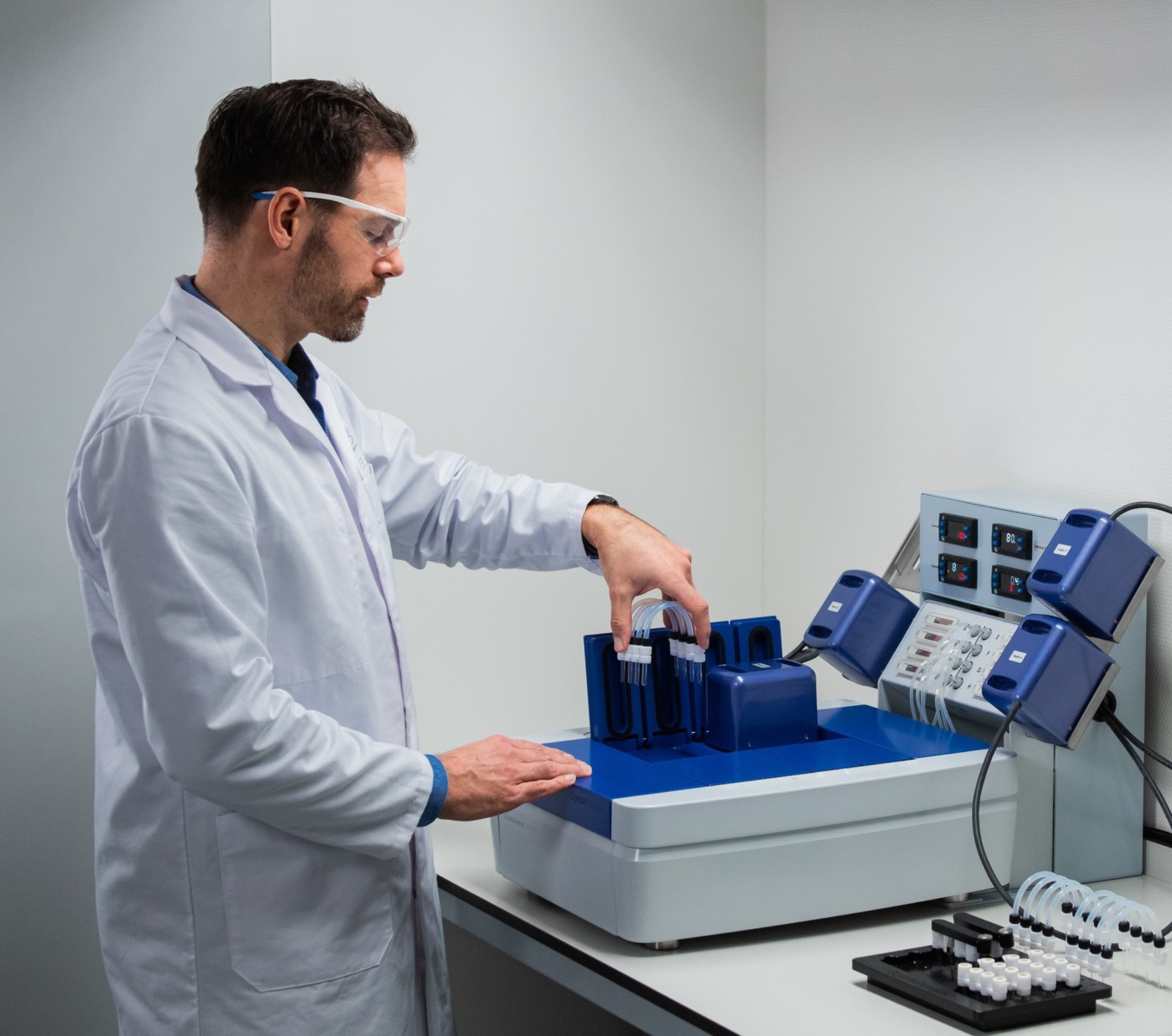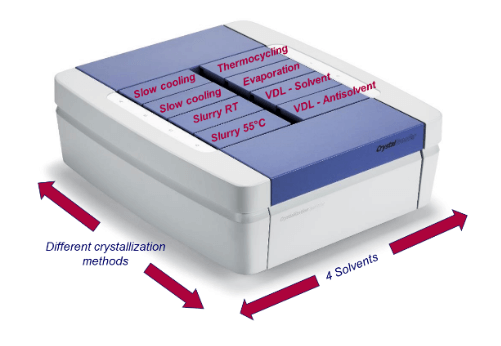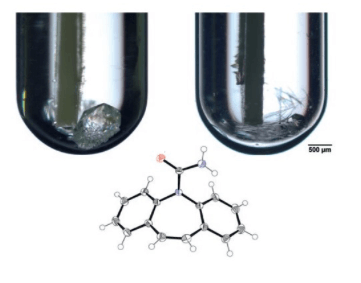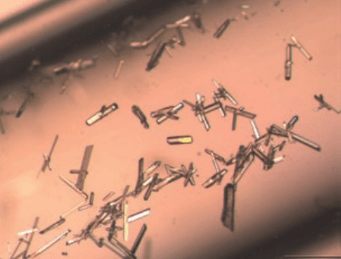
Identify molecular and crystal structure of compounds
Single crystal analysis is a very important technique used to identify molecular and crystal structure of compounds. The information generated through single crystal x-ray analysis can have significant regulatory and legal ramifications and can determine if a patient for a new molecule or solid form is accepted or rejected. Furthermore, in the case of salts and co-crystal single crystal analysis is a necessity in order to differentiate between the two, as they both take different regulatory pathways.
However, to take advantage of single crystal x-ray diffraction, samples need to be of a high standard, and the better the crystals the faster and better-quality data can be produced. There are a range of experiments that are used to generate single crystals including vapor diffusion, evaporation, cooling, temperature cycling or sublimation in a wide range of solvents with different functionalities. This can feel like a “Scatter gun” approach, trying as many conditions as possible to hopefully obtain crystals of high enough quality for analysis with many methods taking months to complete.
The CrystalBreeder offers a platform to control a large range of parameters used in single crystal experiments. The CrystalBreeder allows you to perform multiple crystallization experiments, such as vapor diffusion, evaporation, cooling, temperature cycling or sublimation in a controlled way.
Nucleation and growth
Single Crystal experiments are based around controlling the two main process of crystallization, nucleation and growth, and being able to minimize the first and maximize the second. Therefore, experiments need to generate supersaturation very slowly in order to avoid unnecessary nucleation. Outlined in the table are the common single crystal experiments used to generate single crystals, as how the supersaturation is generated.
Methods and their descriptions
- Vapor diffusion: The solute is dissolved in a solvent, and a more volatile antisolvent is diffused by vapor into the solvent.
- Cooling: Solute dissolved in solvent cooled slowly, gradually generating supersaturation.
- Evaporation: Driving off the solvent generating supersaturation.
- Temperature cycling: Heating and cooling suspensions dissolving small crystals then growing on the larger crystals.
- Sublimation: Changing the solid form to the vapor phase, this then condenses and crystallizes.
- Solvent layering: A layer of antisolvent is carful deposited on top of solvent containing solute. The antisolvent gradually diffuses into the solvent creating supersaturation.
There are several factors for each of these method for generating single crystals which can be controlled using the CrystalBreeder. Solvent selection is an important factor in single crystal generation, high solubility could result in too small crystals unsuitable for analysis.
Using the CrystalBreeder you can quickly screen for suitable solubility profiles. Temperature, and gas flow can be controlled using the software and manifold, which control the rate of solvent evaporation, vapor diffusion and cooling rate, ensuring the control of supersaturation generation limiting nucleation.
The glassware used in single crystal experiments is important, small imperfections or impurities (dust, chips or cracks) can act as nucleation sites, the CrystalBreeder uses 0.3 ml vials with the same diameter as NMR tubes which are commonly used in single crystal experiments and can be purchased at every lab supplier.

Single crystal by slow cooling
Single crystals of carbamazepine were grown using a slow cooling method on the CrystalBreeder instrument. Initially solubility curves were collected in a range of solvents to better understand the solubility landscape. Four different concentrations were heated until dissolution then cooled to -15 °C at 0.5 °C/min for each solvent.
Using this method excellent quality crystals were obtained of the anhydrate of carbamazepine (CBZ) crystallizes as thin needles (monoclinc P21/n) and the hydrated form of carbamazepine (CBZ·0.25H2O) crystallizes as prismatic crystals (trigonal R-3).

Sublimation
Sublimation is a method that is not commonly used method for growing single crystal because it can be difficult to set up. However, using the CrystalBreeder’s vapor diffusion coupled with the independent temperature control it is possible to run sublimation experiments easily. An example of using the CrystalBreeder for sublimation of salicylic acid, where approx. 1mg of compound was placed in a CrystalBreedervial and heated to 150°C, a vacuum (150 mbar) was applied and resulted in high quality crystals in a few hours.
Using the CrystalBreeder it is possible to conduct reliable, reproducible and controlled single crystal growing experiments removing the randomness and reducing experimental time.

Thank you
Technobis Crystallization Systems is grateful to Prof Dr Bernhard Spingler and Philippp Nievergelt from University of Zurich, Switzerland, and Dr Doris Braun from Innsbruck University, Austria.